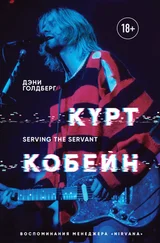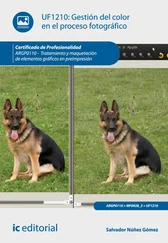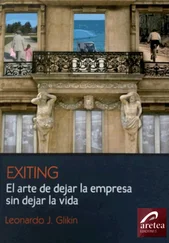Autism Services Center, 605 Ninth Street, RO. Box 507, Huntington, WV 25710-0507. Tel: (304) 525-8014; Web site: www.autismservices.com; e-mail: autismservices@aol.com.
Autism Society of America, 7910 Woodmont Avenue, Suite 300, Bethesda, MD 20814-3015. Tel: (301) 657-0881; (800) 328-8476; Web site: www. autism-society.org. Founded by parents in the days when parents were under suspicion, the society now includes thousands of parents, teachers, and physicians nationwide. With chapters in every state, it is the parent’s and teacher’s best resource, and should be every professional’s first recommendation.
MAAP Services, Inc., P.O. Box 524, Crown Point, IN 46308. Tel: (219) 662- 1311; Web site: www.maapservices.org.
Overseas
Autism-Europe, Avenue E. Van Becelaere 26B, bte 21, B-1170 Brussels, Belgium. Tel: +32 (0)2 675 72 70; e-mail: autisme.europe@arcadis.be; Web site: www.autismeurope.arc.be.
National Autistic Society, 393 City Road, London EC1V-1NG, United Kingdom. Tel: Main switchboard, +44 (0)20 7833 2299; helpline: +44 (0)870 600 8585; e-mail: nas@nas.org.uk. Its Web site, www.oneworld. org/autism_uk, provides a link to a wide variety of sites, including international organizations and informational sites. The society maintains a listing of autism societies all over the world. Travelers who contact these will find autism opens the door to shared experience that crosses every border.
Picture Credits and Copyright Acknowledgments
Picture Credits
Howard Levitz, TGL Photoworks, Williamstown, MA: All photographs in the color insert; photographs on pages 1, 117, and 127.
David Park: Photographs on pages 106, 107, and 128.
Rosalie Winard: All photographs in the black-and-white insert; photographs on pages iii and 105.
Copyright Acknowledgments
Most of chapter 1, as well as the closing pages of chapter 12, appeared as „Exiting Nirvana“ in The American Scholar, spring 1998. I owe special thanks to Anne Fadiman, the Scholars editor; that trial run, made at her suggestion, gave me the courage to undertake this book.
Passages in chapters 1 and 3 from Leo Kanner, „Autistic Disturbances of Affective Control“, reprinted by permission of the publisher from Donnellan, A., Classic Readings in Autism (New York: Teachers College Press © 1985 by Teachers College, Columbia University. All rights reserved.).
Passages in chapters 2 and 4 from Lorna Wing, „The Relationship Between Asperger’s Syndrome and Kanner’s Autism“, and in chapter 3 from Uta Frith, reprinted from Uta Frith, ed., Autism and Asperger Syndrome (Cambridge: Cambridge University Press, 1991). Reprinted by permission of Cambridge University Press.
Portions of chapters 2, 3, 4, 8, 9, 10, and 1 x have been adapted from passages in „Growing Out of Autism“, in E. Schopler and G. B. Mesibov, eds.
Autism in Adolescents and Adults, Plenum Press, 1983; „Social Growtl Autism: A Parent’s Perspective“, in E. Schopler and G. B. Mesibov eds» Social Behavior in Autism, Plenum Press, 1986; and «Autism into Art: A Handicap Transfigured», in E. Schopler and G. B. Mesibov, eds., High-Functioning Individuals with Autism, Plenum Press, 1992.
Passages in chapter 3 from Eric Courchesne et al., «Recent Advances in Autism», reprinted from H. Naruse and E. M. Ornitz, eds., Neurobiology and Infantile Autism, Elsevier Science Publications, 1992. Reprinted by permission of Elsevier Science.
Passages in chapters 5 and 6 from Lola Bogyo and Ronald Ellis, «Elly: A Study in Contrasts», reprinted from L. K. Obler and D. Fein, eds., The Exceptional Brain (Guilford Press, 1988). Reprinted by permission of the publisher.
Passages in chapter 5 from David Park and Philip Youderian, «Light and Number: Ordering Principles in the World of an Autistic Child», reprinted by permission from Journal of Autism and Childhood Schizophrenia, vol. 4, no. 4 (1974).
Passage in Appendix I reprinted with permission from Diagnostic and Statistical Manual of Mental Disorders, fourth edition. Copyright 1994 American Psychiatric Association.
The words are from my earlier book about Jessy, The Siege: The First Eight Years of an Autistic Child, originally published by Little, Brown in 1967. It was reissued in 1982 with an epilogue, „Fifteen Years After“. It is being issued in 2001 as The Siege: A Family’s journey into the World of an Autistic Child. (The quoted passage is on page 3.)
Bruno Bettelheim, The Empty Fortress: Infantile Autism and the Birth of the Self (New York: Free Press, 1967), p. 125.
Leo Kanner, „Autistic Disturbances of Affective Contact“ (1943), in Classic Readings in Autism, A. M. Donnellan, ed. (New York: Teachers College, Columbia University, 1985), p. 50. Kanner spoke at a meeting of the National Society for Autistic Children, July 17–19, 1969.
Clifford Geertz, „Learning with Bruner“, New York Review of Books, April 10, 1997.
Lorna Wing, „The Relationship Between Asperger’s Syndrome and Kanner’s Autism“, in Autism and Asperger Syndrome, Uta Frith, ed. (Cambridge: Cambridge University Press, 1991), p. 111.
Ibid., p. 109.
Diagnostic and Statistical Manual of Mental Disorders, fourth edition (DSM IV) (Washington, D.C.: American Psychiatric Association, 1994).
NAARRATIVE: Newsletter of the National Alliance for Autism Research, no. 3 (fall 1998).
Ibid., no. 6 (summer 2000)
Kanner, op. cit., p. 43.
Ibid., pp. 43–44.
Frith, in Autism and Asperger Syndrome, p. 18.
Ibid., p. 19.
Kanner, op. cit., p. 37.
Eric Courchesne et al., „Recent Advances in Autism“, in Neurobiology and Infantile Autism, H. Naruse and E. M. Ornitz, eds. (New York- Elsevier Science Publications, 1992), p. 115.
Wing, op. cit., p. 95; Bryna Siegel, The World of the Autistic Child: Understanding and Treating Autistic Spectrum Disorders (New York: Oxford University Press, 1996), pp. 49–50.
See Paul’s afterword in Jane Taylor McDonnell’s News from the Border: A Mother’s Memoir of Her Autistic Son (New York: Ticknor & Fields, I993)“
Lola Bogyo and Ronald Ellis, „Elly: A Study in Contrasts“, in The Exceptional Brain, L. K. Obler and D. Fein, eds. (New York: Guilford Press, 1988), pp. 268–271. The authors have kept the pseudonym I used for Jessy in The Siege.
Ibid.
Ibid.
David Park and Philip Youderian, „Light and Number: Ordering Principles in the World of an Autistic Child“, Journal of Autism and Childhood Schizophrenia, vol. 4, no. 4 (1974), pp. 315–318.
The quotations are from Frances Groves Dodd, unpublished journal, entries of October 20 and November 27, 1972.
For more on Jessy’s slow road to a full school day, see C. C. Park, „Elly and the Right to Education“, in Contemporary Issues in Special Education, R. E. Schmid, J. Moneypenny, and R. Johnston, eds. (New York: McGraw-Hill, 1977), pp. 34–37.
Bogyo and Ellis, op. cit., pp. 269–270. For more on Jessy’s numbers, see Park and Youderian, „Light and Number“.
Читать дальше
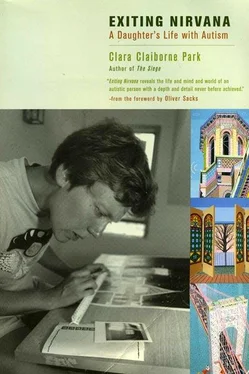
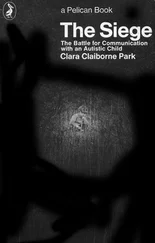
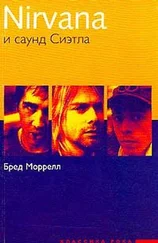
![Майкл Азеррад - Come as you are - история Nirvana, рассказанная Куртом Кобейном и записанная Майклом Азеррадом [litres]](/books/392533/majkl-azerrad-come-as-you-are-istoriya-nirvana-ra-thumb.webp)



![Эверетт Тру - Nirvana - Правдивая история [litres]](/books/399241/everett-tru-nirvana-pravdivaya-istoriya-litres-thumb.webp)
